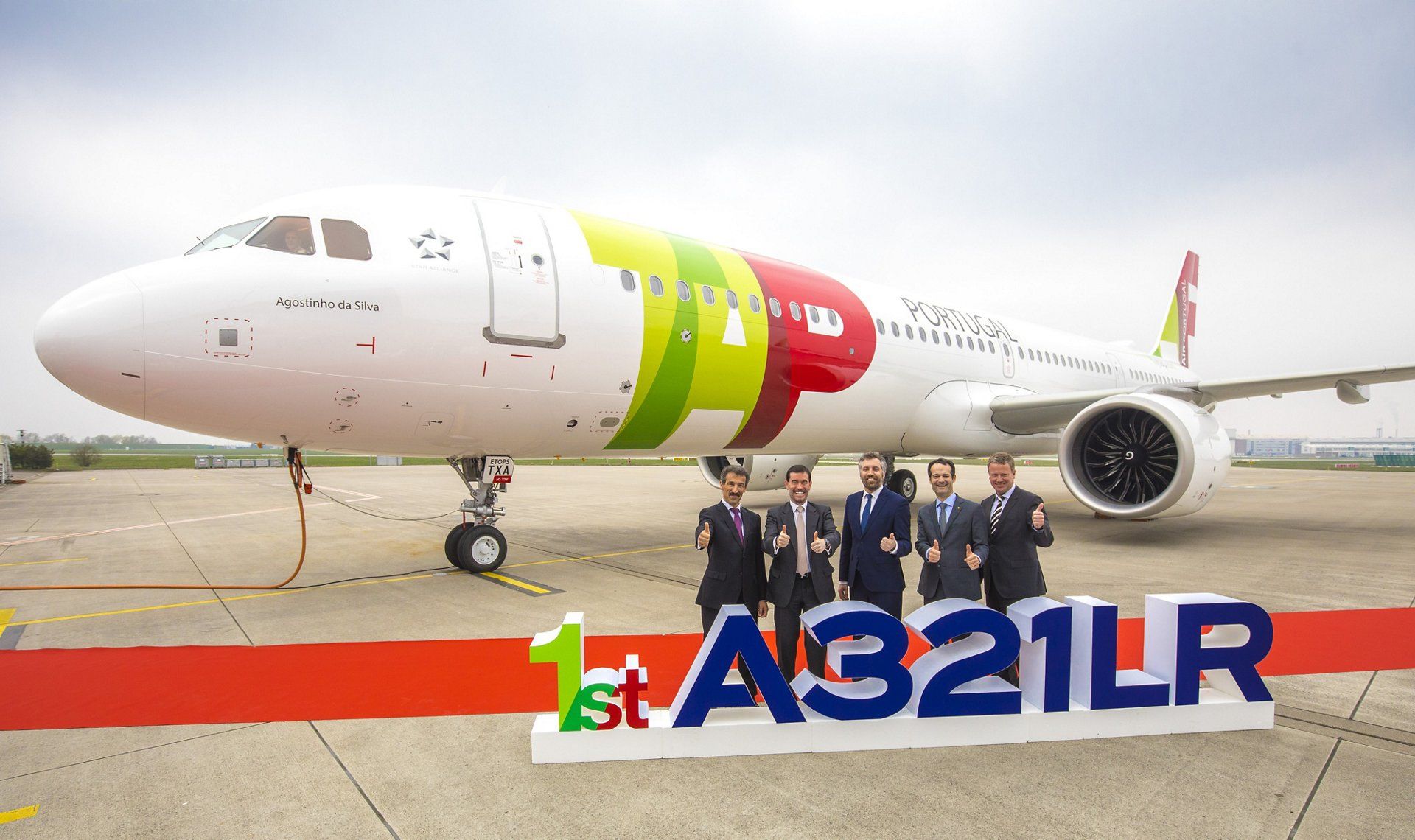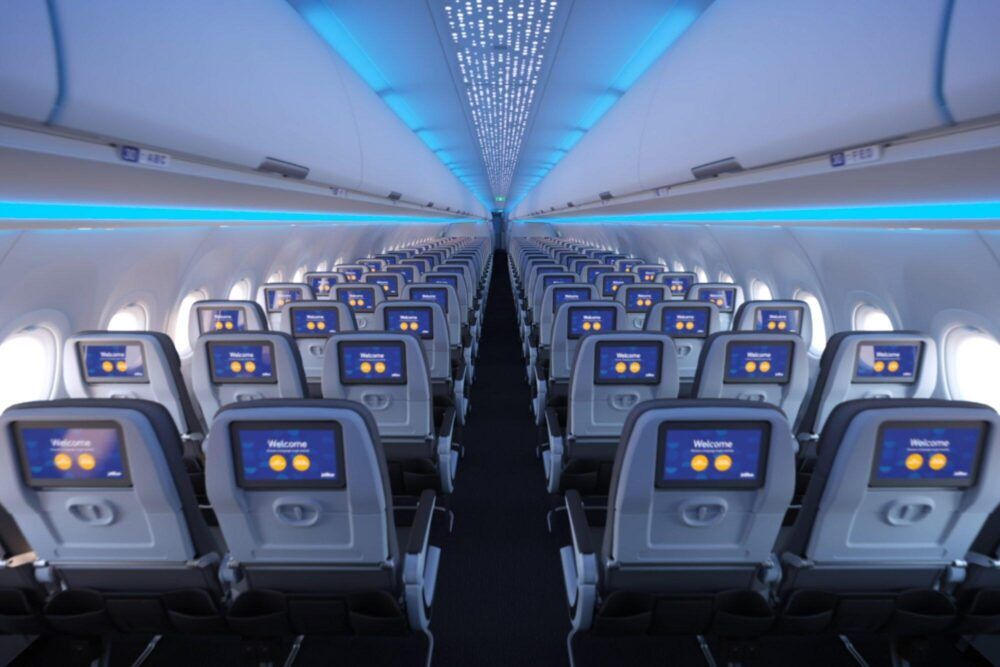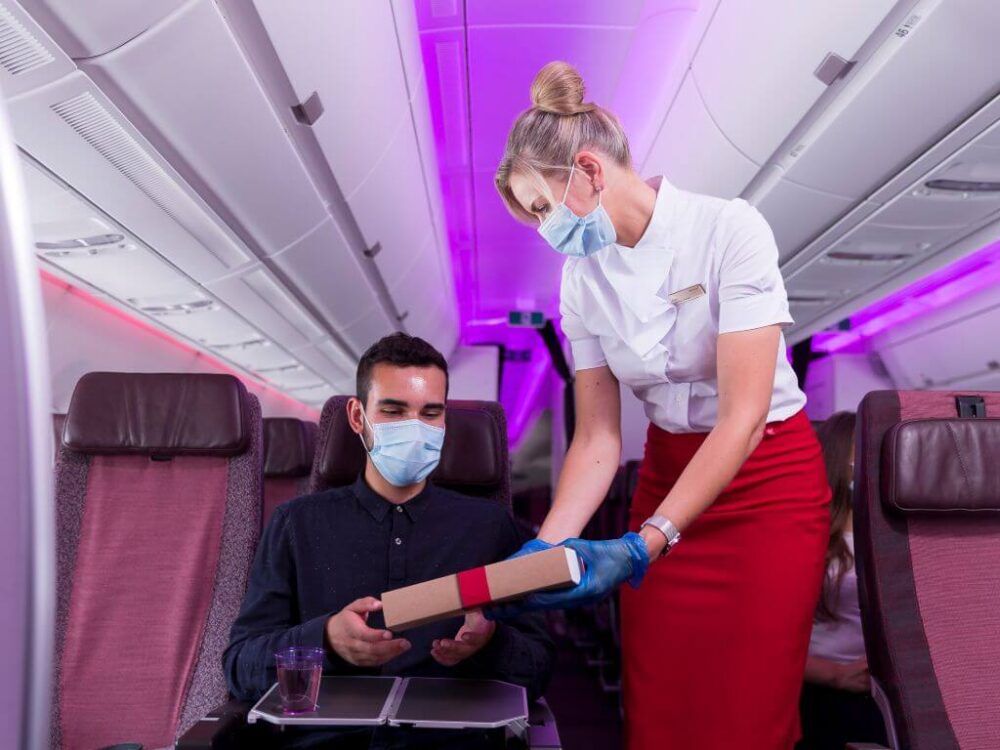For most passengers, the most challenging element of the long-haul narrowbody revolution is the notion that they will be cramped onboard. Having overcome this issue with some simple inspection of the seat specifications, there comes another challenge – will there be enough lavatories on the plane?
How many loos?
For many passengers, the idea of being stuffed into a narrow tube for nine hours or more is a challenging concept to embrace. While Airbus has created the technology to fly continent-spanning routes with narrowbody aircraft, changing passenger perception is another kettle of fish.
PaxEx guru Jonny Clark, Founder of The DesignAir, doesn’t think that, in terms of seat comfort, that the experience will be all that different. Speaking to Simple Flying for a recent podcast, he noted that great improvements have been made in both the business and economy cabins, so much so that there won’t be a huge differentiation in terms of the experience onboard.
Nevertheless, Clark does believe that there are some new issues that airlines will need to tackle if they plan on launching these very long narrowbody flights. He said,
“The one thing that probably people haven't thought about is the toilets. On, for example, JetBlue’s aircraft, they’ve got a fantastic Mint product, a fantastic economy product, they've really invested in it and it's going to be a bit of a game changer for transatlantic. But they've only got four toilets on the A321.
“The amount of passengers using those is going to be much higher. And on a transatlantic, everyone's had their three hours sleep, and then they all wake up wanting to use the toilet before they land. So, queues are going to be bigger.”
For JetBlue, the airline has deliberately configured its transatlantic A321LR to be lightly loaded. Just 138 seats are onboard, including 24 Mint suites. That gives a passenger to lav ratio of one toilet per 34.5 passengers. That’s better than most widebodies, but not every airline will be as conscientious.
Come the A321XLR, we could see low-cost airlines attempting to pack the maximum 220 passengers onboard. That takes the passenger to bathroom ratio to a leg-crossing 55 people per lav. It’s something to think about, and an issue these airlines need to be aware of before launching long flights.
Stay informed: Sign up for our daily and weekly aviation news digests.
Single aisle problems
As well as the bathroom bottleneck, Clark highlighted some other issues unique to the long-haul narrowbody environment. He noted that,
“If you look at even a really dense 777, you've got 10 abreast in economy and you have two aisles. That means that, at maximum, you've got five passengers in any row using one aisle. In a narrow body, you've got six. Suddenly you're actually finding that you're going to see a little bit more traffic going down that single aisle than you would on a widebody.”
On a short flight, where sleep is not important, this additional traffic is not such a problem. However, on a long trip, particularly overnight, that additional traffic could be disrupting. It’s one of the reasons JetBlue opted to put the heads of the Mint Suites nearer to the window.
Clark also noted the challenges for flight attendants, notably trying to get passengers fed early on a red-eye so they can get to sleep. He commented that,
“They’re going to have to serve 120 or 140 passengers in economy in one go very quickly using just one aisle. So the service is going to have to adapt.
“There are many new issues that are going to arise from having these narrowbody long haul aircraft. And that's going to be interesting to see how airlines adapt over the next few months and years.”
Are you worried about the bathroom capacity on aircraft like the XLR? Is this a challenge airlines can overcome? Let us know your thoughts in the comments.



